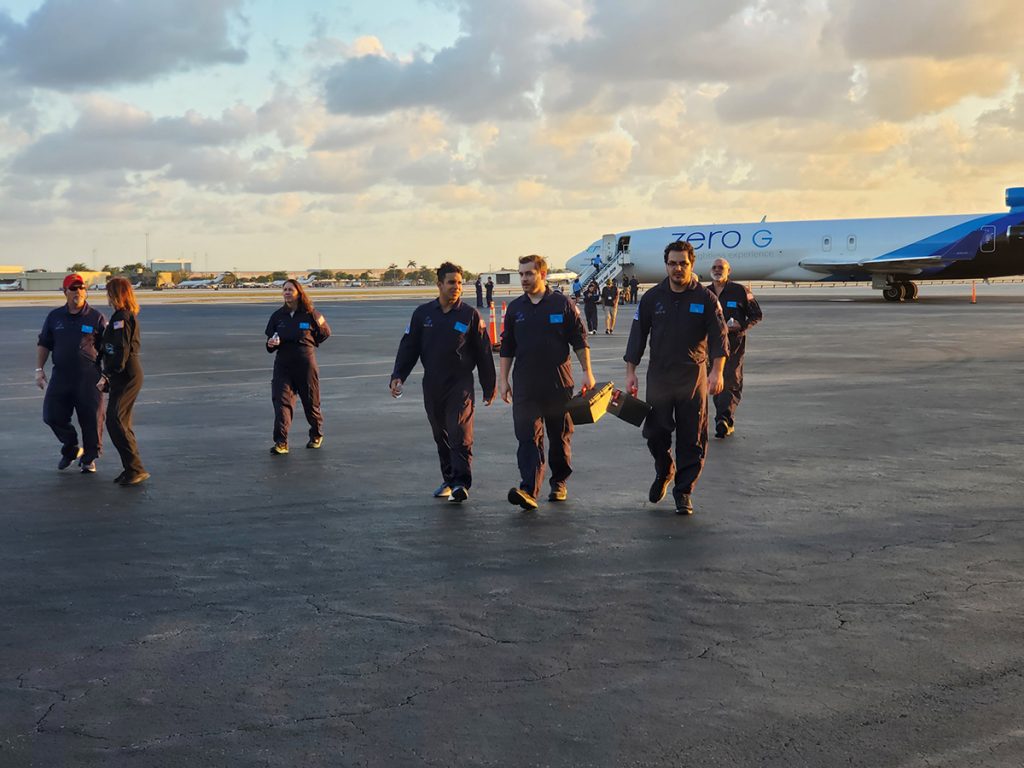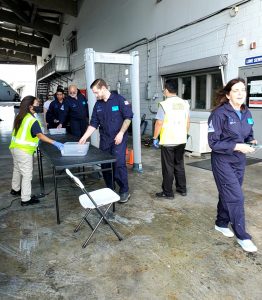How do you prepare for weightlessness? A team of researchers at NASA’s Marshall Space Flight Center has been doing so in preparation of their April 28 and 29 parabolic flights with ZERO-G in Fort Lauderdale, Florida.

So what is on their parabolic pre-flight checklist?
An easily digestible breakfast
The flight team is served a doctor-recommended breakfast of bagels, fruit, and juice — all of which digest quickly and easily to provide fuel for their bodies as they experience periods of variable gravity.
Proper attire
Fort Lauderdale is a subtropical climate with warm and humid conditions in the spring. Participants wear light, comfortable clothing and closed toed shoes for movement in the hangar, on the ramp, and on the aircraft. Each flyer wears a ZERO-G flight suit, which enables ease of movement in air.
A COVID-19 test
All non-vaccinated participants are tested for COVID-19 daily to ensure safety of all parties.
Identification
Just like a typical commercial flight, each individual must complete a TSA check before boarding the aircraft. They must present a valid driver’s license, passport, or other TSA-approved identification.
Once all the pre-flight boxes are checked, the team will board a modified Boeing 727 — named G Force One — to execute their experiment in a weightless environment.

While in the air, the team will test an experiment known as the Ring-Sheared Drop. Developed by Marshall and Rensselaer Polytechnic Institute of Troy, New York, the experiment will study the formation of potentially destructive amyloid fibrils, or protein clusters, like those found in the brain tissue of patients battling neurodegenerative diseases — such as Alzheimer’s and Parkinson’s.
To track the flight path as it performs parabolas, check out Flight Aware.
For more updates on the flight, the team, and the experiment, continue to follow Watch the Skies blog in the coming week.


